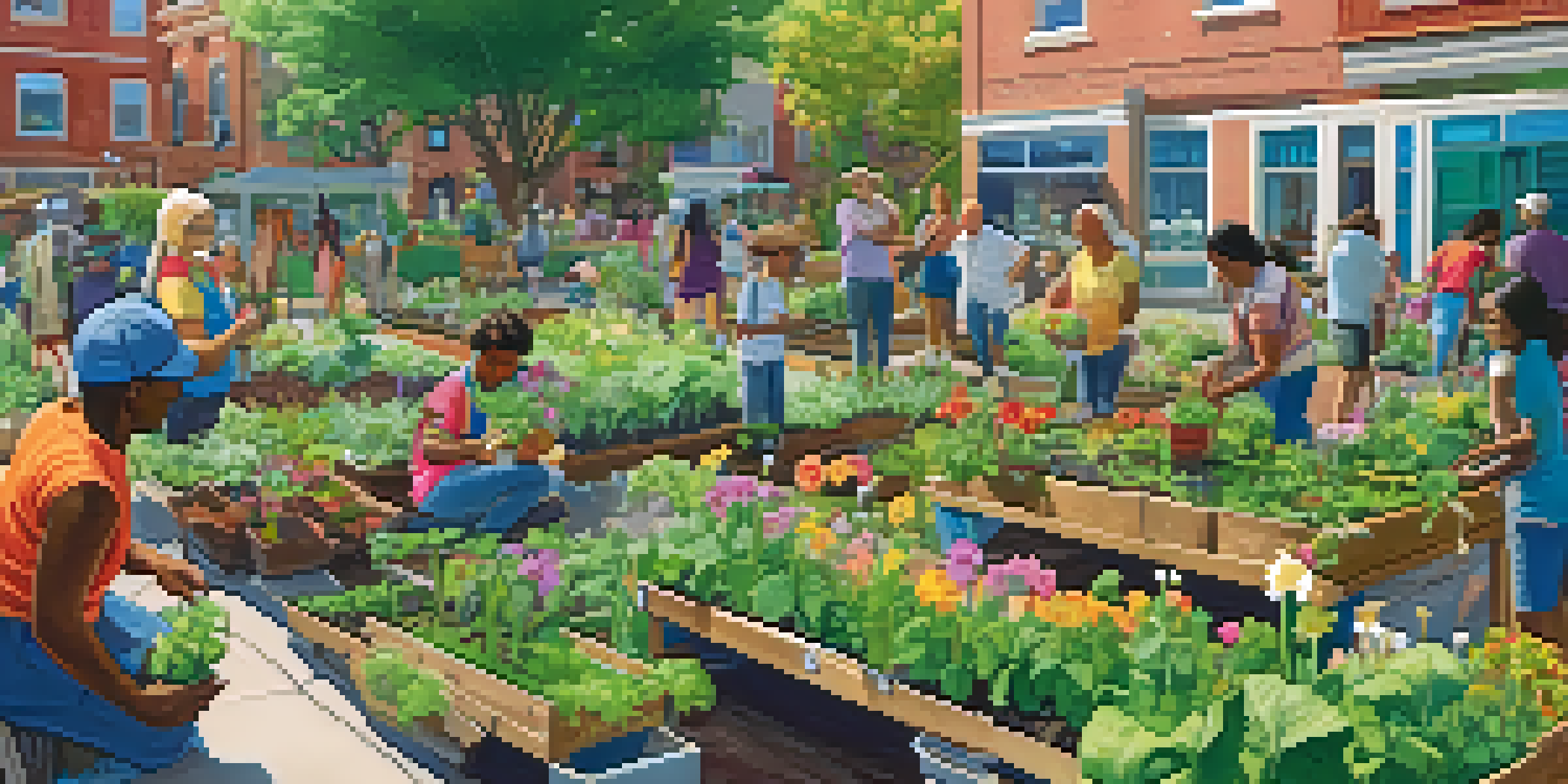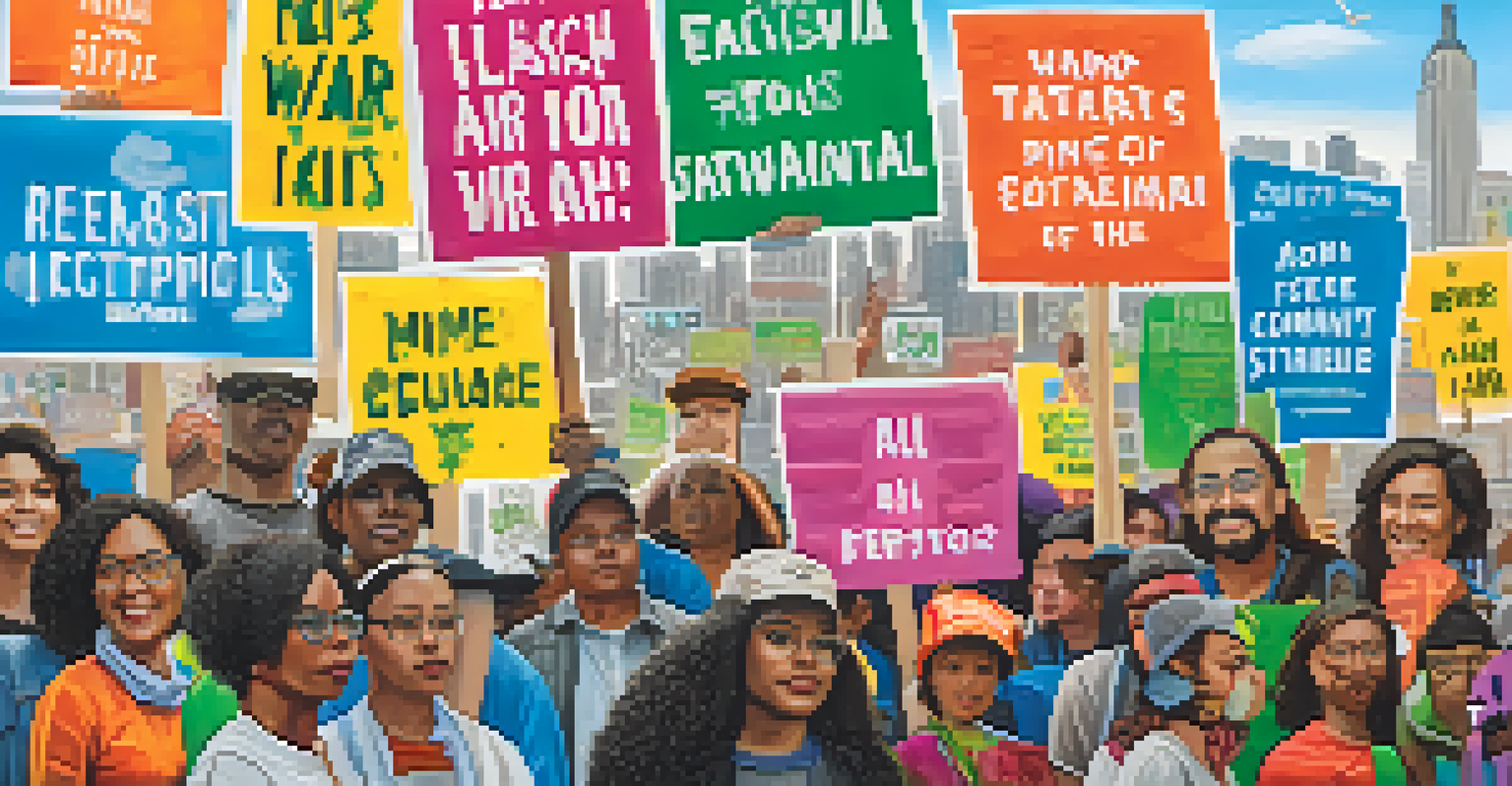Understanding Environmental Justice in San Jose Communities

What is Environmental Justice and Why Does It Matter?
Environmental justice is the fair treatment and meaningful involvement of all people in environmental policies and practices. It acknowledges that certain communities, particularly low-income and minority groups, often bear a disproportionate burden of environmental hazards. Understanding this concept is crucial as it highlights the need for equitable access to clean air, water, and land for everyone, regardless of their socio-economic status.
Justice is what love looks like in public.
In San Jose, where diverse communities coexist, the implications of environmental justice are particularly significant. Many neighborhoods face challenges like pollution from nearby industries or lack of green spaces, which can affect residents' health and well-being. By addressing these issues, we not only improve the quality of life for these communities but also foster a more inclusive and sustainable future.
Recognizing the importance of environmental justice leads to collective action. When communities come together to advocate for their rights, they can influence policy changes that promote healthier environments. This movement is essential for creating a just society where everyone has equal access to a safe and healthy environment.
Historical Context of Environmental Justice in San Jose
The roots of environmental justice in San Jose can be traced back to the civil rights movement, which highlighted the inequities faced by marginalized communities. Over the years, various events, such as the establishment of polluting industries near residential areas, have prompted residents to raise their voices. This historical context is vital for understanding the ongoing struggles for environmental equity in the city.

San Jose's diverse demographics, including a significant population of Latino and Asian communities, have shaped the landscape of environmental activism. These groups often face unique challenges, such as language barriers and limited access to resources, which can hinder their ability to advocate for their rights. Understanding these historical dynamics helps to appreciate the urgency of addressing environmental injustices today.
Environmental Justice Defined
Environmental justice ensures fair treatment and involvement of all communities, especially marginalized ones, in environmental policies.
Moreover, the historical neglect of certain neighborhoods has created a legacy of environmental disparities. By examining the past, we can identify patterns of injustice and work towards rectifying them. This understanding is essential for fostering a more equitable approach to urban planning and environmental policy in San Jose.
Key Issues Facing San Jose Communities
In San Jose, several key issues highlight the environmental justice challenges faced by communities. Air quality is a significant concern, with pollution from vehicles and nearby industries disproportionately affecting low-income neighborhoods. These environmental stressors can lead to serious health problems, including respiratory issues, making it imperative to address the root causes of pollution.
The environment is where we all meet; where we all have a mutual interest; it is the one thing all of us share.
Another pressing issue is access to green spaces. Many underserved communities in San Jose lack parks and recreational areas, which are essential for physical and mental well-being. The absence of these spaces not only limits residents' opportunities for outdoor activities but also contributes to a sense of isolation and disconnection from nature.
Additionally, the threat of climate change exacerbates existing inequalities. Vulnerable communities are often the least equipped to adapt to environmental changes, such as rising temperatures and increased flooding. Addressing these issues is crucial for ensuring that all San Jose residents can thrive in a healthy and sustainable environment.
Community Voices: Activism and Advocacy
Community activism is a powerful tool for promoting environmental justice in San Jose. Local organizations and grassroots movements have emerged to amplify the voices of residents who are often overlooked. These groups work tirelessly to raise awareness about environmental issues and advocate for policy changes that prioritize community health and safety.
For instance, initiatives such as neighborhood clean-up events and educational workshops empower residents to take charge of their environment. By fostering a sense of ownership and responsibility, these efforts can lead to meaningful change at the local level. Community engagement is vital for building trust and collaboration among residents, organizations, and policymakers.
Key Issues in San Jose
San Jose faces critical environmental challenges, including poor air quality and lack of green spaces in low-income neighborhoods.
Moreover, these advocacy efforts often intersect with broader social justice movements. By linking environmental issues to concerns like housing, transportation, and economic opportunity, activists can create a more holistic approach to problem-solving. This interconnectedness strengthens the fight for environmental justice and cultivates a sense of solidarity among diverse communities.
The Role of Local Government in Environmental Justice
Local government plays a crucial role in advancing environmental justice in San Jose. Policymakers have the power to create regulations and ordinances that protect vulnerable communities from environmental hazards. By prioritizing equity in decision-making, elected officials can help ensure that all residents benefit from clean air, water, and green spaces.
One example of this is the development of environmental justice policies that specifically target impacted neighborhoods. These policies can include stricter emissions standards for industries located near residential areas or increased funding for park development in underserved communities. Such initiatives demonstrate a commitment to addressing historical injustices and fostering a healthier environment for all.
Additionally, collaboration between local government and community organizations is essential for effective implementation of environmental justice initiatives. By engaging with residents, policymakers can better understand the unique challenges faced by different communities. This collaborative approach not only leads to more effective solutions but also builds trust between residents and government officials.
Success Stories: Positive Changes in San Jose
Despite the challenges, there have been notable success stories in San Jose's pursuit of environmental justice. Community-led initiatives have resulted in the revitalization of neglected neighborhoods, leading to improved public health outcomes and increased access to green spaces. These positive changes are a testament to the power of collective action and advocacy.
For instance, several local organizations have successfully lobbied for the creation of new parks and community gardens in underserved areas. These spaces not only provide residents with recreational opportunities but also foster a sense of community and connection to nature. The impact of such initiatives can be profound, contributing to better mental and physical health.
Community Activism's Impact
Grassroots movements in San Jose have successfully advocated for environmental improvements, demonstrating the power of collective action.
Moreover, successful partnerships between community groups and local government have led to the implementation of programs aimed at reducing pollution and promoting sustainability. These collaborations demonstrate that when communities come together with a shared vision, they can create meaningful change. Celebrating these successes is essential for motivating further efforts toward environmental justice.
Looking Ahead: The Future of Environmental Justice in San Jose
As San Jose continues to grow and evolve, the pursuit of environmental justice remains a critical endeavor. The city faces ongoing challenges, such as climate change and urban development, which require proactive solutions that prioritize equity. Looking ahead, it's essential for all stakeholders—residents, organizations, and policymakers—to collaborate in shaping a sustainable and just future.
Community engagement will be key to ensuring that the voices of marginalized populations are heard in decision-making processes. By fostering inclusive dialogues, San Jose can develop policies that address the needs of its diverse communities. This approach not only promotes transparency but also empowers residents to take an active role in shaping their environment.

Ultimately, the future of environmental justice in San Jose depends on a shared commitment to equity and sustainability. By embracing innovative solutions and prioritizing the well-being of all residents, the city can pave the way for a healthier and more just environment. The journey may be challenging, but the potential for positive change is within reach.